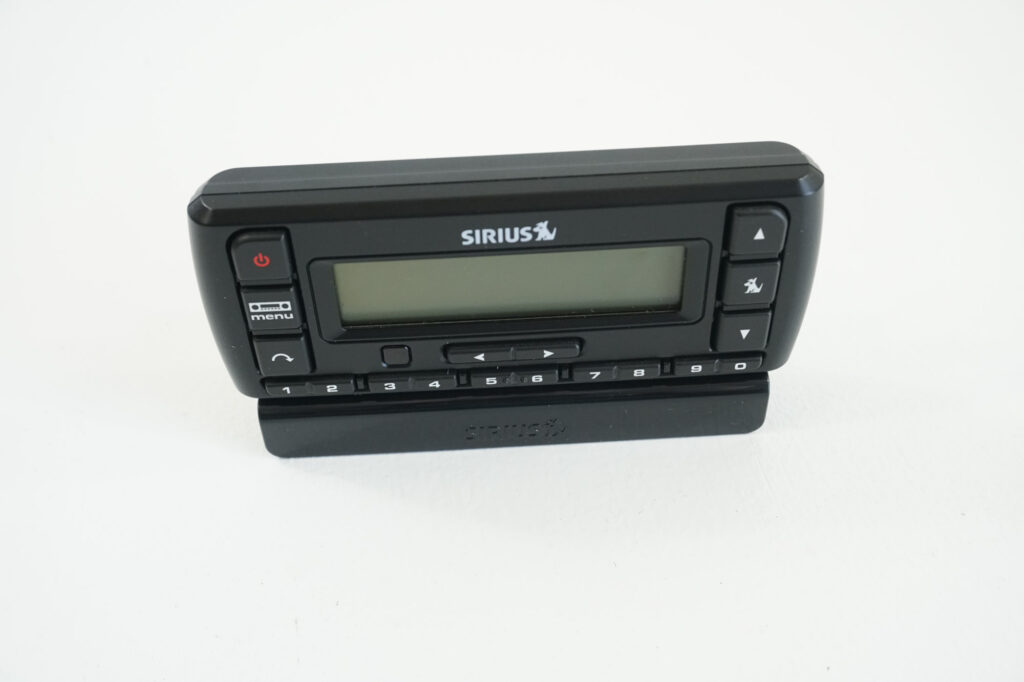Vehicle entertainment systems have come a long way since Chrysler introduced an in-car phonograph to play records in the 1950s. Remember when we used to carry bulky cassette tapes and CD cases, then switched to connecting small MP3 players to our vehicles? Now we can play music via Bluetooth from our phones or touchscreen in-dash displays.
Car radio systems have also evolved. From the standard AM-FM radio that receives terrestrial signals, more vehicles have radio systems that utilize satellites to transmit radio signals.
What is Satellite Radio?
Satellite radio is a type of digital broadcast that transmits signals over a large area. It’s clearer and more consistent than conventional radio, making it perfect as a source of entertainment for cars.
One reason satellite radio gained popularity was because the signal of conventional radio breaks up and fades into static when you travel far away from the station, as their signals only travel 30 to 40 miles from the source.
How Satellite Radios Work
Satellite radio combats the limitations of traditional radio by using satellites that orbit Earth. It transmits signals from a ground-based station to one or more satellites before having it bounced back to specialized receivers in vehicles.
This means satellite radios can broadcast throughout an entire country uninterrupted. Tall buildings usually cause issues with transmission, but ground-based repeaters augment these signals in urban areas to prevent static or breakage.

Satellite radios follow a subscription-based model. You need to buy a receiver to activate by subscribing to the radio. Once the receiver activates, it decodes the encrypted digital signals sent by the satellite.
These services have a hundred or more channels with different forms of entertainment, including music, news, talk, sports, and more. And since you already paid for their services, these stations usually only have a couple of commercials, meaning there are little to no ad breaks between songs.
History of Satellite Radios in Cars
Before looking into the history of satellite radio, it’s first important to know how we got to that point and why it was a necessary and inevitable evolution in infotainment.
In the 1980s, Sony introduced CD machines for cars. Mercedes-Benz capitalized on this technology, becoming the first automaker to offer it as an option in 1985. By the 90s, CD players and changers overtook cassettes as the go-to source of music in cars.
In just a few years, consumer preferences shifted towards digital technology. Buying different CDs to listen to what you want can be expensive compared to subscription models that offer every type of music in addition to live news, sports, and radio shows.
Rivals XM and Sirius were the first to offer a subscription-based model for radio stations in 2001. Automakers signed exclusive deals with either of the two stations.
Fast forward to 2007, XM and Sirius announced their plan to merge to lower programming costs by eliminating overlapping stations and duplicated marketing costs. The merger was approved in 2008, resulting in SiriusXM.
The Decline and Current State of Satellite Radios
Satellite radio saw a steady growth in subscribers in the 2010s. While the number eventually evened out, there weren’t any signs of a looming decline in popularity.
That’s until some automakers decided to go against the norm. Tesla’s Model S and X had the required hardware for satellite radio, but their Model 3 and Model Y didn’t have the same gear. Meanwhile, electric vehicle (EV) manufacturer Rivian only offers audio streaming services, including Spotify, Tidal, TuneIn, and Amazon Music.
The trend of automakers being oblivious to satellite radio continued with EV startup VinFast and Lucid, as the former skipped the satellite radio. At the same time, the latter signed on with SiriusXM only after customer deliveries of the Air sedan began.
Honda has also shifted some vehicles to a cellular-based data connection to support features like vehicle notifications and remote status checks. Since high-speed cellular data access is easily accessible in most cities, automakers can offer features like in-vehicle Wi-Fi hotspots and over-the-air updates.

What Does the Future of Satellite Radio Look Like?
It’s hard to predict the future, even when it seems like the writing’s on the wall. In hindsight, the demise of cassettes and CDs seems definitive, but there was also a time when radios in cars felt like the pinnacle of infotainment technology.
Of course, we can still take bits and pieces from trends today to get an idea of the future of satellite radio. Streaming services such as Spotify, Pandora, Apple Music, YouTube Music, and Amazon Music have a chokehold on the music streaming industry.
The overlapping issue among these streaming services is that they rely heavily on cellular data. As mentioned, satellite radio’s biggest appeal is that you get a clear connection everywhere you go. With cellular data, you’ll never know when the connection could go haywire, resulting in dropped connections.
We could be headed towards a future where these streaming platforms also utilize satellite technology. But a more realistic approach would be better cellular data across the globe to ensure a clear connection wherever we’re driving.
There’s also the looming threat of AI and Augmented Reality (AR) potentially taking over vehicle infotainment. Some cars already have personalized algorithms based on the driver’s voice. AR has also begun providing drivers with a more immersive and intuitive driving experience with real-time navigation guidance and safety alerts.
Any information provided on this Website is for informational purposes only and is not intended to replace consultation with a professional mechanic. The accuracy and timeliness of the information may change from the time of publication.




















